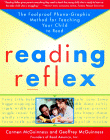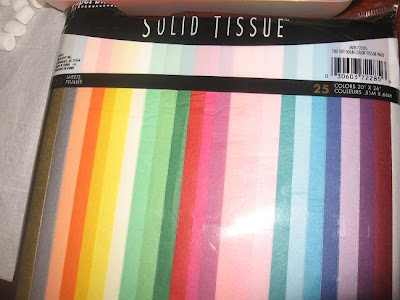Dane's Aunt Pat thinks that Anderson Cooper looks like Huyler when he's grown up. I see the Chinnock-y resemblance.
Sesame street doesn't allow embedding so you have to click here to watch it on Youtube.com
Dane's Aunt Pat thinks that Anderson Cooper looks like Huyler when he's grown up. I see the Chinnock-y resemblance.
Sesame street doesn't allow embedding so you have to click here to watch it on Youtube.com

Ink Cartridges available at:
Our curriculum is available at:
We could also do our own shopping with gift cards from Office Max



 One day we made a Rainbow Stick, which is much like a Rainstick, but more colorful. We used a paper towel tube, tons of toothpicks, and a handful of lentils. We painted the tube the colors of the visible spectrum, and then we poked the toothpicks through every-which-way and taped shut the ends with beans inside. Then we covered the pointy tips of all the toothpicks with hot glue “raindrops”. For the finishing touch, we glued cotton ball clouds on each end to cover up the tape. When we tilt the stick back and forth, it sounds like rain gently falling.
One day we made a Rainbow Stick, which is much like a Rainstick, but more colorful. We used a paper towel tube, tons of toothpicks, and a handful of lentils. We painted the tube the colors of the visible spectrum, and then we poked the toothpicks through every-which-way and taped shut the ends with beans inside. Then we covered the pointy tips of all the toothpicks with hot glue “raindrops”. For the finishing touch, we glued cotton ball clouds on each end to cover up the tape. When we tilt the stick back and forth, it sounds like rain gently falling. We also found two books of children’s poetry—one entirely describing colors, and the other describing seasons (including spring and rainbows). Since our Bible lesson was “Thank you God, for this beautiful world” we decided to write poems about things in nature. You can read the kids’ poems on their blogs. Huyler's Blog / Ardara's Blog I was surprised at their chosen subjects. On the last day of school we made a rainbow dessert with every color of Jell-O (in the proper order of course!) and a whipped cream cloud on top! Hooray!
We also found two books of children’s poetry—one entirely describing colors, and the other describing seasons (including spring and rainbows). Since our Bible lesson was “Thank you God, for this beautiful world” we decided to write poems about things in nature. You can read the kids’ poems on their blogs. Huyler's Blog / Ardara's Blog I was surprised at their chosen subjects. On the last day of school we made a rainbow dessert with every color of Jell-O (in the proper order of course!) and a whipped cream cloud on top! Hooray! 

 We saw loons and ducks and some little songbirds. We listened carefully to the songs they sang, drew pictures of everything we saw, and walked very quietly down the path. We had hoped to see the eagle that lives around there, but he wasn’t around. Ardara was a real scout and found the first feather AND a bird nest. Huyler led us off the main trail, closer to the water and found a nesting spot for ducks with TONS of feathers. We really hit the jackpot! We also played a game where you roll a ball to someone in the circle and they have to think of a type of bird before rolling it to someone else. We learned about the Dodo bird—pretty interesting stuff—and we made waterproof “feathers” by rubbing paper feathers with olive oil and then watching water bead off instead of soaking in.
We saw loons and ducks and some little songbirds. We listened carefully to the songs they sang, drew pictures of everything we saw, and walked very quietly down the path. We had hoped to see the eagle that lives around there, but he wasn’t around. Ardara was a real scout and found the first feather AND a bird nest. Huyler led us off the main trail, closer to the water and found a nesting spot for ducks with TONS of feathers. We really hit the jackpot! We also played a game where you roll a ball to someone in the circle and they have to think of a type of bird before rolling it to someone else. We learned about the Dodo bird—pretty interesting stuff—and we made waterproof “feathers” by rubbing paper feathers with olive oil and then watching water bead off instead of soaking in. 


We went to Lynx Lake the other day for a bird watching assignment. (More on that later) I took this video of Huyler doing a trick I did long ago at the Redwood Forrest. I'm pretty sure our old home movies have a clip of me doing this. I remember thinking I was hot stuff! My phone only takes 30 second clips though, I guess, so it cut off me telling the story to Huyler.


 Then we each contributed 100 of something to the festivities—Sticker collection books from Mom,
Then we each contributed 100 of something to the festivities—Sticker collection books from Mom,  marbles from Augie,
marbles from Augie, 
 and poker chips from Huyler.
and poker chips from Huyler.  We divvied up 100 cereal balls and 100 mini marshmallows
We divvied up 100 cereal balls and 100 mini marshmallows  and got to work on a 100-piece puzzle!
and got to work on a 100-piece puzzle! 

 Well, we can count to 100 now, can you?
Well, we can count to 100 now, can you?

















“One of the saddest things I’ve learned in my life, one of the things I least wanted to believe and I resisted believing for as long as I could, was, that people in chains don’t want to get them off, but want to get them ON everyone else.” “Where are your chains?”, they want to know. “How come you’re not wearing chains?” “Do you think you are too good to wear them?” “What makes you think you’re so special?” John Holt (a great educator)